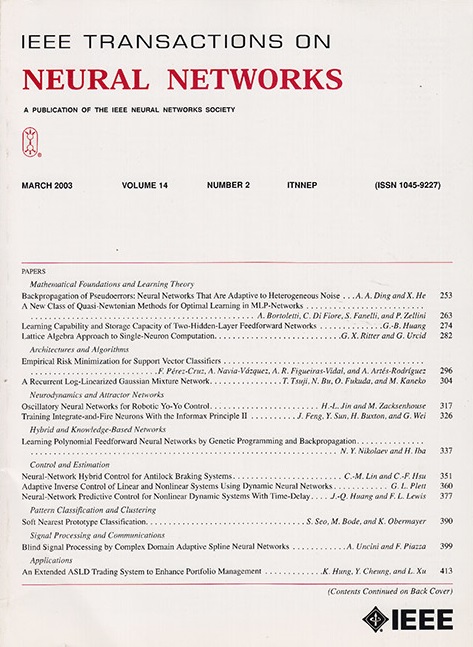操作相同的滤波器冗余度对深度复杂CNN进行有效修剪。
IF 10.2
1区 计算机科学
Q1 COMPUTER SCIENCE, ARTIFICIAL INTELLIGENCE
IEEE transactions on neural networks and learning systems
Pub Date : 2023-10-12
DOI:10.1109/TNNLS.2023.3298263
引用次数: 0
摘要
卷积神经网络(CNNs)中冗余的存在使我们能够去除一些性能下降可接受的滤波器/信道。然而,细胞神经网络的训练目标通常倾向于在不关注冗余的情况下最小化与精度相关的损失函数,使冗余随机分布在所有滤波器上,从而去除其中的任何一个都可能触发信息丢失和精度下降,这就需要对恢复进行微调。在本文中,我们建议在训练过程中操作冗余,以便于网络修剪。为此,我们提出了一种新的向心SGD(C-SGD),使一些滤波器相同,从而产生理想的冗余模式,因为这些滤波器由于其重复而变得纯粹冗余,因此删除它们不会损害网络。如CIFAR和ImageNet上所示,C-SGD提供了更好的性能,因为与现有方法相比,冗余组织得更好。该效率也是C-SGD的特征,因为它与常规SGD一样快,不需要微调,并且即使在非常深的CNN中也可以在所有层上同时进行。此外,C-SGD可以通过首先训练具有相同架构但更宽层的模型,然后将其压缩到原始宽度来提高CNN的准确性。本文章由计算机程序翻译,如有差异,请以英文原文为准。
Manipulating Identical Filter Redundancy for Efficient Pruning on Deep and Complicated CNN
The existence of redundancy in convolutional neural networks (CNNs) enables us to remove some filters/channels with acceptable performance drops. However, the training objective of CNNs usually tends to minimize an accuracy-related loss function without any attention paid to the redundancy, making the redundancy distribute randomly on all the filters, such that removing any of them may trigger information loss and accuracy drop, necessitating a fine-tuning step for recovery. In this article, we propose to manipulate the redundancy during training to facilitate network pruning. To this end, we propose a novel centripetal SGD (C-SGD) to make some filters identical, resulting in ideal redundancy patterns, as such filters become purely redundant due to their duplicates, hence removing them does not harm the network. As shown on CIFAR and ImageNet, C-SGD delivers better performance because the redundancy is better organized, compared to the existing methods. The efficiency also characterizes C-SGD because it is as fast as regular SGD, requires no fine-tuning, and can be conducted simultaneously on all the layers even in very deep CNNs. Besides, C-SGD can improve the accuracy of CNNs by first training a model with the same architecture but wider layers and then squeezing it into the original width.
求助全文
通过发布文献求助,成功后即可免费获取论文全文。
去求助
来源期刊

IEEE transactions on neural networks and learning systems
COMPUTER SCIENCE, ARTIFICIAL INTELLIGENCE-COMPUTER SCIENCE, HARDWARE & ARCHITECTURE
CiteScore
23.80
自引率
9.60%
发文量
2102
审稿时长
3-8 weeks
期刊介绍:
The focus of IEEE Transactions on Neural Networks and Learning Systems is to present scholarly articles discussing the theory, design, and applications of neural networks as well as other learning systems. The journal primarily highlights technical and scientific research in this domain.
 求助内容:
求助内容: 应助结果提醒方式:
应助结果提醒方式:


